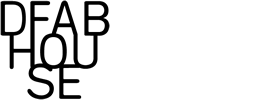SPATIAL TIMBER ASSEMBLIES
Spatial Timber Assemblies is an innovative robotic prefabrication process for timber frame modules. It combines timber frame construction with the precision and speed of robotic fabrication, regardless of the level of structural complexity.
Spatial Timber Assemblies is a joint collaboration of Gramazio Kohler Research, ETH Zurich and ERNE AG Holzbau. The focus is on the development and implementation of an innovative robot-based fabrication process for timber frame modules. This process builds upon existing methods of timber framing by adding the robot’s ability to produce parts just-in-time and to precisely place material in space. The implementation of the robot allows the timber modules to be highly prefabricated regardless of complexity, thus enabling quick and simple on-site assembly.
A computational design model has been developed which generates timber beam geometry based on multiple input parameters. The main design inputs are walls represented as single surfaces and points indicating where connections to exterior systems can be made – such as to the Smart Slab concrete slab in the case of DFAB HOUSE. The resulting beams were then dimensioned based on the predicted loads, and checked against fabrication and assembly constraints.
Using the computational design model, the multi-robotic system fabricated and assembled the design. Each beam was gripped and positioned by the robot, then cut using a CNC-controlled saw. Following this, the robot then milled and pre-drilled all of the required holes for the connection detailing. The beams were then spatially assembled with the aid of path-planning tools. Tolerances during fabrication were also registered and adapted to an internal referencing system (iGPS) and optic sensors.
Spatial Timber Assemblies fabricated the load-bearing timber structure of the upper two stories of DFAB HOUSE. In contrast with standard timber frame structures, the lateral loads can now be borne by the timber beams themselves, relieving the requirement for stiffening plates. This allows for reduction in overall weight and enables the system to cater to DFAB HOUSE’s ruled façade geometry.
MORE INNOVATIONS
Project credits:
Leading investigators
Prof. Fabio Gramazio, Gramazio Kohler Research, ETH Zurich
Prof. Matthias Kohler, Gramazio Kohler Research, ETH Zurich
Contributing researchers
Andreas Thoma (Project lead fabrication), Arash Adel (Project lead computational design), Dr. Aleksandra Anna Apolinarska, Thomas Wehrle (Project lead ERNE AG Holzbau), Lukas Stadelmann, Matthias Helmreich, Augusto Gandía, Gonzalo Casas, Matteo Pacher, Dr. Thomas Kohlhammer, Dr. Volker Helm, Dr. Ammar Mirjan
Supporting technicians
Michael Lyrenmann, Philippe Fleischmann
Industry partner
best wood SCHNEIDER GmbH
ERNE AG Holzbau
Image credits:
Gramazio Kohler Research, ETH Zurich or Keystone / Christian Beutler, Roman Keller
If you intend to use one of the images, please contact us for the exact image credits.
